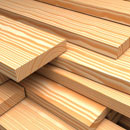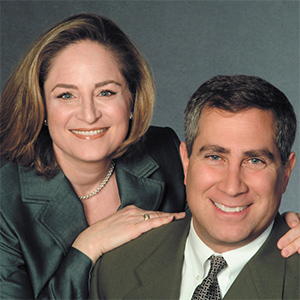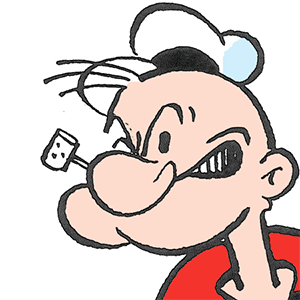Car Exterior Repair Guide: Restoring Shine Without Costly Mistakes
Published in Home Articles
The exterior of your car is more than just a shell-it’s the first impression, a protective barrier, and a point of pride. But over time, even the best-maintained vehicles show signs of wear: scratches, faded paint, dents, and dull finishes. While professional detailing or bodywork can restore a car’s exterior to like-new condition, it often comes with a steep price tag. Fortunately, many exterior repairs can be done at home with the right knowledge, tools, and patience.
This guide walks you through how to repair and restore your car’s exterior shine without making costly mistakes. Read on.
Assessing the Damage: Know What You’re Dealing With
Before diving into repairs, take a detailed walk around your vehicle. Make notes or take photos of all the imperfections you notice. Focus on identifying scratches (both light surface scratches and deeper ones that go into the primer or metal), faded or oxidized paint, swirl marks and water spots, dents and dings, cloudy headlights or taillights, and any faded plastic trim.
Understanding the severity and location of the damage helps determine whether a DIY fix is feasible or if professional help is warranted. It’s helpful to use bright lighting and look from different angles to catch imperfections that might not be visible in dim conditions.
Wash and Decontaminate the Surface
Before any repairs, the surface needs to be thoroughly cleaned. Washing removes dirt, debris, and contaminants that could interfere with polishing or painting.
Begin by rinsing the car with clean water to remove loose dirt. Next, use a pH-balanced car shampoo along with a microfiber wash mitt to wash the entire surface. Rinse the car thoroughly again, then dry it using a clean microfiber towel.
If the paint feels rough after drying, it’s a sign that embedded contaminants are present. In that case, use a clay bar along with a clay lubricant to decontaminate the surface and restore smoothness. Avoid using household detergents or dish soap, as they strip protective wax and can dry out the paint.
Fixing Scratches and Paint Imperfections
If a scratch is light enough that you can’t feel it with your fingernail, it likely hasn’t penetrated beyond the clear coat. In such cases, you can use a dedicated scratch remover or polishing compound. These products can be applied using a dual-action (DA) polisher or a microfiber applicator pad. Use circular motions to apply the product, then buff and wipe the area clean.
For deeper scratches that cut into the base coat or primer, touch-up paint may be required. Begin by cleaning the area thoroughly with isopropyl alcohol. If bare metal is exposed, apply a primer first.
Then, use touch-up paint that matches your car’s color code (which can be found on your vehicle’s information plate). Allow the paint to dry, apply a clear coat over it, and once everything is dry, gently wet sand with 2000 to 3000 grit sandpaper.
Finish by polishing and waxing the area to blend it with the surrounding paint. Keep in mind that rushing this process or using mismatched paint will likely make the damage more noticeable, rather than less.
Restoring Oxidized or Faded Paint
Oxidation causes the paint to appear chalky or dull and is common in older vehicles or those left exposed to the sun for long periods. To restore oxidized paint, begin by thoroughly washing and clay barring the car. After that, use a rubbing compound to remove the oxidized surface layer.
Once the oxidation is removed, follow up with a finishing polish to bring back gloss and clarity. Finally, seal the paint with a high-quality wax or paint sealant to protect it from future sun damage and environmental wear. If you’re looking for longer-lasting protection, ceramic coatings are an excellent option, though they require more careful surface preparation and precise application.
Removing Swirl Marks and Water Spots
Swirl marks typically come from improper washing and drying techniques and are often most visible under direct sunlight. Water spots, on the other hand, are caused by mineral deposits left behind when water evaporates.
To remove swirl marks, use a swirl remover polish applied with a DA polisher. Apply moderate pressure in overlapping passes for best results.
To remove water spots, start with a white vinegar and water solution (mixed in a 1:1 ratio) to dissolve mineral residue. If the spots are stubborn or etched into the clear coat, use a dedicated water spot remover formulated for automotive finishes. To prevent new swirl marks in the future, wash your car using the two-bucket method-one bucket for soapy water and one for rinsing the mitt between panels.
Headlight Restoration
Cloudy or yellowed headlights reduce nighttime visibility and detract from the overall appearance of your vehicle. Most headlight restoration kits come with sanding pads, polish, and sealant. Start by taping around the headlight lenses to protect the surrounding paint.
Wet sand the headlight surface with increasingly fine grits of sandpaper, usually starting around 800 grit and working up to 2000 grit. After sanding, apply a plastic polish using a foam pad or applicator.
Once the lens is clear, finish the process with a UV-resistant clear coat or sealant to prevent future yellowing. If you’re in a pinch, toothpaste can temporarily clear up headlight haze due to its mild abrasives, but the results won’t last long.
Repairing Minor Dents
Small dents, such as those caused by shopping carts or hail, can often be fixed at home using basic tools and techniques. Suction cup dent pullers and glue pull kits are commonly available and effective for shallow dents. Another popular method is the heat-and-cool technique using a hairdryer and compressed air.
First, heat the dented area with a hairdryer for about 30 seconds. Then, spray it with compressed air held upside-down to freeze the surface.
The rapid temperature change may cause the panel to contract and pop the dent back into place. This method works best on plastic or flexible panels, while metal panels may require more advanced paintless dent repair (PDR) tools and skills.
Reviving Faded Trim and Plastic
Plastic trim often fades from black to a dull gray due to UV exposure. Fortunately, there are several ways to restore it.
One option is to apply a commercial trim restorer product. These are typically wiped onto the trim, allowed to soak in, and then buffed off to reveal a darker, rejuvenated finish. Another method is to carefully use a heat gun, which warms the plastic and revives the oils within it, darkening the trim.
For longer-lasting results, consider using a plastic coating that provides semi-permanent restoration for months or even years. Be cautious when using trim restorer near painted surfaces, as it can stain the paint.
Polishing and Waxing: The Final Shine
After repairing and restoring the car’s exterior, polishing and waxing give it the final gleam while providing protection. Polishing involves using a finishing polish to remove haze or very light imperfections left behind after other repair steps. Apply the polish with a foam pad or machine polisher, then buff it off using a clean microfiber towel.
Waxing adds a protective layer over the paint. You can choose a carnauba wax for a warm, deep shine or a synthetic wax for longer durability.
Apply the wax in small sections, allow it to haze, then buff it off for a brilliant finish. As a general guideline, wax should be reapplied every two to three months, while paint sealants or ceramic coatings may last up to a year with proper maintenance.
Essential Tools and Products for DIY Car Exterior Repair
For successful car exterior repairs, you’ll need the right tools and products. These include microfiber towels and wash mitts for safe cleaning, as well as a pH-balanced car shampoo that won’t strip your wax. A clay bar kit is essential for decontaminating the paint, while polishing compound and pads help correct imperfections.
A dual-action (DA) polisher can make polishing faster and more effective, but it’s not mandatory. You’ll also need a touch-up paint kit matched to your car’s color code, a trim restorer for plastic areas, and a headlight restoration kit for cloudy lenses. High-quality wax or a paint sealant is needed to protect your hard work.
Lastly, use a two-bucket wash system with a grit guard to avoid creating new swirls during washes. Check out thetouchupshop.com to learn more.
When to Call a Professional
Some types of exterior damage are best left to professionals. These include cracked or peeling clear coat, severe dents or frame damage, rust spots, and full panel repainting.
If your DIY attempts aren’t yielding the desired results or you feel uncertain about your ability to fix the issue properly, it’s wise to consult a body shop or detailer. Doing so can often prevent a minor repair from turning into a major (and expensive) correction later on.
Shine On, Without Breaking the Bank
Restoring your car’s exterior doesn’t have to mean draining your wallet at a body shop. With the right approach, products, and attention to detail, even beginners can rejuvenate their vehicle’s appearance.
Start small, take your time, and focus on the basics: clean, repair, and protect. But by following this guide and avoiding the most common mistakes, you’ll soon have your car gleaming like it just rolled off the lot-without the professional price tag.
If you want to read more articles, visit our blog.




























Comments